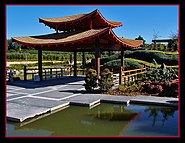| Main | Births etc |
|---|
| Pokolbin Cessnock, | |||||||||||||
 Sunset over a Pokolbin Vineyard | |||||||||||||
| Population: | 625 (2006 census) | ||||||||||||
| Established: | 1800s | ||||||||||||
| Postcode: | 2320 | ||||||||||||
| Property Value: | AUD $320,000 | ||||||||||||
| Location: |
| ||||||||||||
| LGA: | Cessnock City Council | ||||||||||||
| |||||||||||||
Pokolbin (pron. Pu-KOL-Bn) is the centre of the famous Lower Hunter Valley wine region in New South Wales, Australia. It is a rural locality rather than a town or village. It is located between the towns of Cessnock and Branxton.
History[]
The Darkinjung people (specifically the Wonarua tribe) originally inhabited the Pokolbin area for more than 3,000 years. They were the major inhabitants at the time of European contact. This contact was disastrous for the Darkinjung people. Many were murdered or died as a result of European diseases. Others were forced onto neighbouring tribal territory and killed. Many lost the will to live and occupied shanty ghettos on the edge of white settlements. Settler pressure on land also constricted traditional tribal and clannish domains, often leading to tribal fighting[1].
In 1828 the first vineyard was established by the Wilkinsons at Oakdale, in the growing Pokolbin area[2]. Then in the 1860’s, land settlement became extensive between Nulkaba and Pokolbin, with wheat, tobacco and grapes being the principal crops[1].
Wine[]

Tempus Two Winery.
There are dozens of wineries, ranging from large multi-nationals to small family run operations. In addition to the long-established names like Drayton's, Lindemans, McWilliams Mount Pleasant, Tulloch, Lake's Folly and Tyrrell's, newer plantings from the likes of Brokenwood, Don Francois, Allandale, Petersons and Bimbadgen only add to the quality of wine coming out of the area. Much of the rolling countryside around Pokolbin is under vine with the traditional varieties Shiraz and Semillion still dominating but extensive plantings of Chardonnay, Cabernet Sauvignon and the occasional plot of Pinot Noir can be seen.
Experts agree that the Lower Hunter shouldn't be able to grow such great wines because the climate is not what could be called ideal....extremely hot summers and freezing winters with frequent frost present a constant challenge to vineyard managers and winemakers alike. These experts also agree that the saving graces of the region are the mountains which encircle three sides of the valley, the cloud cover, and afternoon easterly sea breezes which during summer help to mitigate the blazing sunshine and keep humidity moderated in the crucible of the valley floor. The differing soil types encountered vary so much ranging from rich red volcanic soil from the long-extinct volcano of Mount View and sandy loam which benefits most white varieties. The much-prized red volcanic soil is fickle to say the least as it occurs mostly on the southern ridges however it can be found in patches on the valley floor that dive under the sandy loam only to re-appear across the road in a neighbour's vineyard! Winemaking in the Lower Hunter Valley can definitely be a battle with nature.
Over the decades, the style of Hunter whites and reds has changed vastly, from robust, muscular reds exhibiting the famous Hunter Valley "sweaty saddle" and extraordinarily long-lived Semillon whites to reds showing more fruit, complexity and delicacy and whites exhibiting fruit-driven characters. It's fair to say the Hunter can still show you the old and new in one afternoon. Draytons, McWilliams, Lindemans, Tyrrells, Jay Tulloch and The Rothbury Estate still knock out some old-style Hunter wines with the likes of Brokenwood and Bimbadgen Estate leading the charge for the "new chums". Traditional style Hunter Semillons in particular have produced some of Australia's most distinctive whites with 20 plus years ageing in the bottle not uncommon. Old un-oaked Hunter Semillon starts life as a steely, austere thing but with time they mature in magnificent wine with a distinctive buttercup yellow colour, a nose reminiscent of honey and burnt toast with a beautiful complexity on the palate and good acid backbone. Although Shiraz and Semillon were the traditional Hunter staples, in the late 60's and early 70's Dr Max lake showed everyone what could be done, with a great amount of skill and care, with Chardonnay and Cabernet Sauvignon. Lake's Folly wines are still a rare gem in the Australian wine landscape.
Accommodation[]
There is a vast array of accommodation in the area due to the wine industry and Pokolbins' proximity to Sydney (approximately 160 kilometres north). There are country resorts, golfing resorts, motels and guest houses and hostels. There are many excellent quality restaurants where visitors can eat well and try local wines.
Attractions[]

Japanese pagoda at the Hunter Valley Gardens
A list of Attractions in the Pokolbin region:
- Wineries.
- Pokolbin village.
- Hunter Valley Gardens. Spanning over 25 hectares, the Hunter Valley Gardens are located in the heart of the Hunter vineyards at the foothills of the Brokenback Ranges[3].
- Potters Brewery. Established in 2002, Potters brewery is the Hunter's first microbrewery located in the heritage listed "Brick Beehive Kilns of Nulkaba"[4].
Gallery[]
References[]
- ^ a b Cessnock City Council. Cessnock LGA at a Glance
- ^ Cessnock local history. Mine and wine town
- ^ Hunter Valley Gardens website
- ^ Potters Brewery website
| ||||||||
| ||||||||
| This page uses Creative Commons Licensed content from Wikipedia (view authors). |


